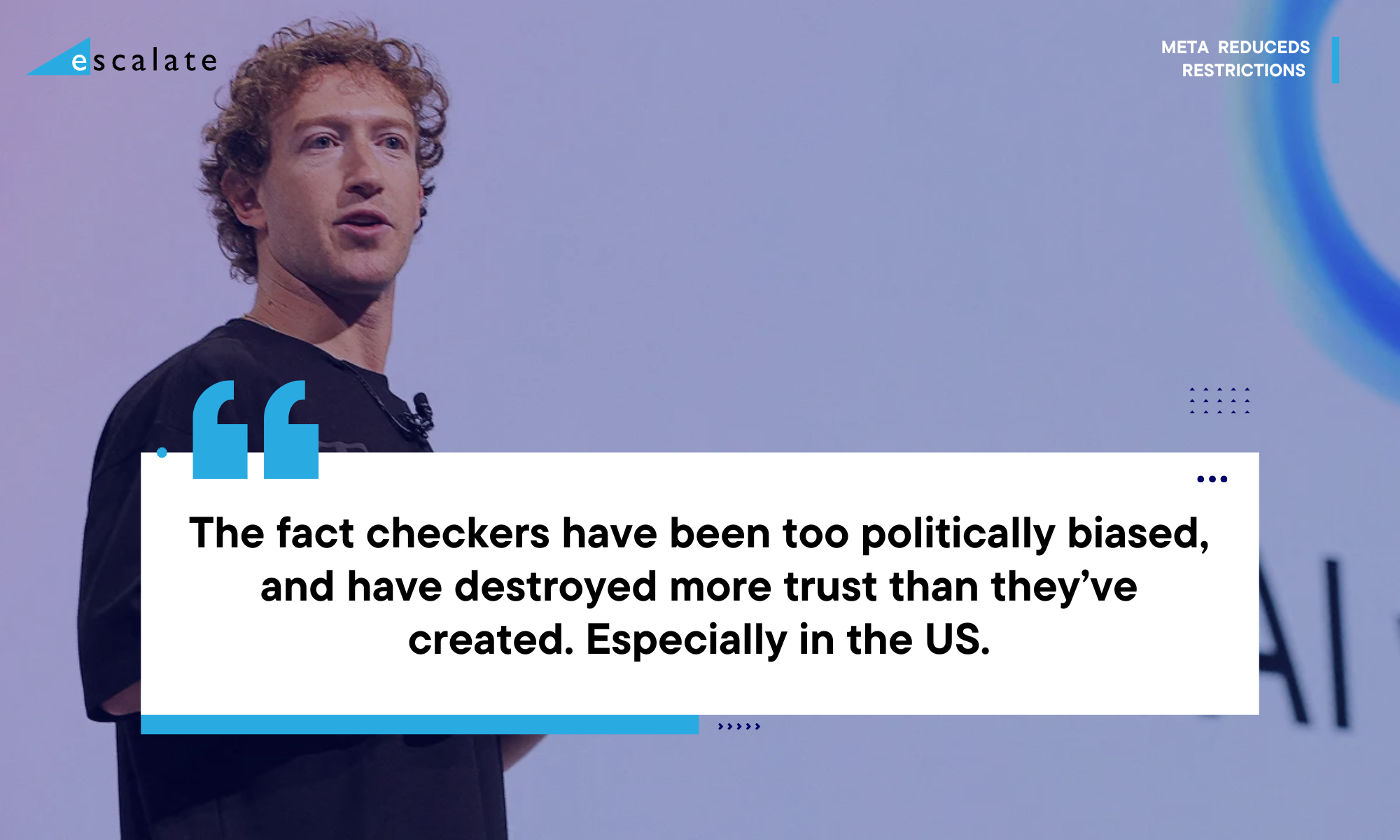What Does Meta’s Recent Announcement of Reduced Restrictions on Content Mean for B2B Marketing Leaders?

Mark Zuckerberg and Meta announced this week that they will end fact-checking and remove speech restrictions across Facebook and Instagram. For B2B marketers and public relations professionals, this announcement calls for an immediate review of where their content appears and what their goals should be.
While Facebook and Instagram have a place in the B2B marketing world, they are often more prominent for B2C and CPG organizations. However, platforms like Facebook and Instagram serve as primary sources for amplifying hard news coverage and owned content for technology companies. This announcement should serve as a wakeup call for all marketing and communications leaders as to where they are aiming for their stories to appear and what role their owned content should play.
In this morning’s Axios AM Newsletter, Mike Allen makes two points very clear: 1. Trust in traditional media is vanishing, and 2. The burden now falls on you to find sources of information you trust for reliable truth. That means better scrutinizing not only the publications you choose, but the individuals you follow on social media. That’s a lot to ask — but it’s the new necessity.
There is a lot to unpack here for communications and marketing leaders.
First, the trust in traditional media. I am on the side of the fence that says, this is an individual’s decision. If your viewpoints lead you to questioning what’s being reported on WSJ, Fortune, Hotels Magazine or CSO Online, then yes, that trust is vanishing, but that doesn’t mean it’s true for everyone, but it does raise a red flag to where you should be putting your efforts for be it earned or paid content.
Secondly, the burden now falls on you to find your reliable sources of truth in the media. This has probably been the case for many years, but now it is more important than ever. From a marketer perspective, you must know now more than ever WHERE your target audiences are going for their information and how they engage. Buyer personas have always been important, but it is more imperative today to truly understand their news/information consumption habits to achieve the results you’re after.
So, what should marketing and comms teams do?
1. Identify your targets – By knowing what outlets and influencers are the go-to’s for your audience, you can streamline where you put your efforts. Gone are the spray and pray approach. Instead, a much more targeted, consistent effort may increase your return. Does this mean less quantitative coverage? Possibly. Does it mean more quality coverage? Absolutely.
2. Have a much tighter narrative – When engaging with the media less will be more today. Stay closer to the message you want to convey and be careful about branching out too far from your original talking points. This can lead to comments being taken out of context and give fuel for others to twist your words and change the intent of your commentary.
3. Increased focus on owned content – If you’re worried about how others are going to tell your story, or it being taken out of context, the best way to get your message across is to have a consistent stream of information shared from your own .com. The importance of owning your message and news will only grow as you can control what appears on your site/on your blog. Let these resources serve as a destination site for trusted content that your audiences can come to and learn from.
The media waves have been shifting for some time. The latest news out of Meta does not mean that traditional media is dead, it just means the media you go after has to be a trusted source by you and your target audiences. Feel free to share how you’re going to shift your content and media relations strategies based on this latest announcement.
